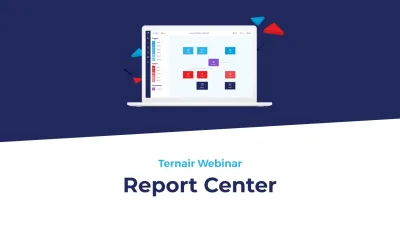Solutions & results
24% organic growth stock market website
92% of website visitors are recognized, of which over 65% can be emailed
59% average CTO
23% marketing database growth
12% more registrations
10% more visitors
62% rebook by exhibitors for 2021
8.1 average exhibitor rating
SEO, content marketing and marketing automation
Aquatech is an international exhibition on water technology, a market that is growing rapidly worldwide. In 2017, the demand from exhibitors already exceeded the space available. As a result, Aquatech Amsterdam had to make a so-called "turn" in 2019: from one building with seven halls to two buildings with nine halls including the middle section Elicium. With this, there will be a second entrance at the front, more floor space but also many more aisles. That means not only a different route and more walking for visitors, but also recruiting more visitors to avoid empty aisles. Because no matter how good the quality of a trade show, exhibitors and visitors experience it as less successful when they walk through empty aisles. Therefore, the RAI set a goal of achieving ten percent more visitors than in the previous edition.
Water is an incredibly large concept that covers flood water, drinking water, wastewater and industrial water. The latter target group in particular has traditionally always been difficult for the RAI to reach. A party like Heineken, for example, does not recognize itself in the term industrial water user, so you cannot invite them as such. However, there is an interest in all kinds of topics related to water use to which you can respond intelligently.
More qualitative traffic
"We believe in content that translates to scholarship," Koomen explains. "We hired a content director in late 2018 to bring structure and quality to articles. With that, we noticed we were getting more quality website traffic that converts better. For Aquatech Amsterdam 2019, Melanie Vergeer of Ternair therefore suggested that we focus even more heavily on content to invite visitors based on their interests."
With keyword research and available visitor data, the target groups and initial topics for the fair were determined. "The funny thing about the keyword research is that we were also able to tell the trade show manager in advance which topics the visitors would find interesting for a seminar or session," Koomen says. "Using Google does require website improvements in advance. Especially the loading speed makes a big difference on your findability."
The content strategy
With click analysis and feedback from the market, the RAI defined twelve containers of topics. Periodically, with content director Tom Freyberg, it was determined which content was interesting and distinctive enough to fill the newsletters. February 2019 started with six articles per month. This number doubled in June to 12 articles per month. At the start of Aquatech Amsterdam 2019 on Nov. 5, there were one hundred high-quality articles online. Through social media and newsletters, the RAI promoted the content. "Remarkably different was that the newsletters were minimally about the exhibition, about once a month. We mainly brought industry news because, above all, we wanted to attract these target groups to us. Of course we also want them to come to the fair, but first to the website."
On the website, Ternair Marketing Cloud recognized visitors and linked them to the RAI's marketing database. Click behavior was used to determine interest per container. This enabled the RAI to then send targeted content per container in news releases through its campaign management solution. "The first mails were created, then it continued automatically via automation. Our focus was on determining the containers: does one more need to be added? How much interest is there now for this container and can we mail it already? Only when we had targeted exhibition information that matched an area of interest did we start sending that target group an invitation to Aquatech," Koomen outlines. "Whereas we used to send eight to 10 mailings before the trade show, in 2019 there were on average only three per recipient."
"Whereas we used to send eight to 10 bulk mailings for the fair, now on average there were only three personalized mailings per recipient."





